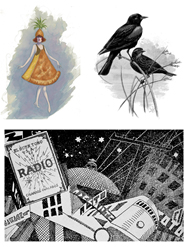
Check de website van het “Center for the Study of Public Domain” van de Duke University om te zien welke films, boeken en muziekstukken dit jaar in het openbaar domein zijn terecht gekomen!
Elk jaar komt er nieuwe creatieve content in het openbaar domein terecht. Dat betekent dat je ermee mag werken zonder een som aan de eigenaars van de auteursrechten te moeten betalen.
Het Europees auteursrecht verschilt van het Amerikaanse. Bij ons komen werken na 70 jaar vrij, in de VS na 75 jaar. Het Congres van de Verenigde kan ook extra verleningen van de bescherming beslissen. Dit gebeurde in 1995, waardoor werken van 1924 pas dit jaar vrij komen. Bekijk ook de Catalogue of Copyright Entries voor de volledige lijst van de vrijgekomen werken.
Why celebrate the public domain?
A wellspring for creativity. The goal of copyright is to promote creativity, and the public domain plays a central role in doing so. Copyright law gives authors important rights that encourage creativity and distribution. But it also ensures that those rights last for a “limited time,” so that when they expire, works can go into the public domain, where future authors can legally build upon their inspirations. As explained by the Supreme Court:
“[Copyright] is intended to motivate the creative activity of authors and inventors by the provision of special reward, and to allow the public access to the products of their genius after the limited period of exclusive control has expired.” Sony v. Universal (1984).
Several of the works above were based on public domain works. Eugene O’Neill’s Desire Under the Elms adapted Greek myths to a rural New England setting. Dante’s Inferno fused parts of Dante’s Divine Comedy with elements from Dickens’ A Christmas Carol. In 2020, anyone can use these works as raw material for their own creations, without fear of a lawsuit.

Images from 1923: A monthly zine of public domain treasures
Access to our cultural heritage. The public domain also enables access to cultural materials that might otherwise be lost to history. 1924 was a long time ago. The vast majority of works from 1924 are out of circulation. When they enter the public domain in 2020, anyone can make them available online, where we can discover, enjoy, and breathe new life into them. (Empirical studies have shown that public domain books are less expensive, available in more editions and formats, and more likely to be in print—see here, here, and here.) The works listed above are famous, that is why we included them. But they are just the tip of the iceberg. Who knows what forgotten works you might find?